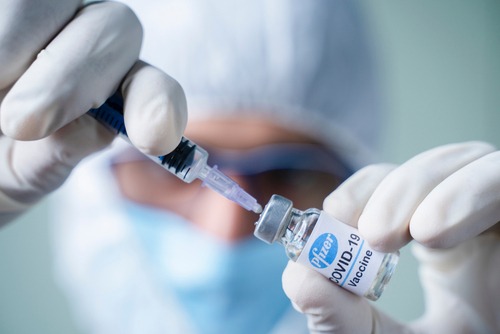
The Biden administration’s plan to tackle COVID-19 includes delivering at least 100 million vaccines in 100 days to the American people. As of this week it was also announced that the federal government purchased 200 million additional doses from Moderna and Pfizer-BioNTech, enough to vaccinate the U.S. population by the end of summer.
Carrying out these large-scale initiatives may have the might of the federal government behind it, however, vaccine hesitancy coupled with the fragmented nature of vaccine distribution in the United States — one dependent on state-by-state and county-by-county rollouts— could complicate these efforts and hinder outcomes.
Five physicians from across the country spoke at an event hosted by Newswise earlier this month on the piecemeal system of vaccine delivery and what policy makers, health practitioners, and local leaders can do to encourage robust vaccination strategies while bolstering public confidence.
Vaccine Acceptance
Part of understanding why people do not want to take a COVID-19 vaccine means examining the communities where medical providers come from. That’s what the Temple University Center for Bioethics, Urban Health and Policy did when faculty launched focus groups among University employees, particularly for those who lived locally. The groups helped identify respected community members who could serve as credible messengers to promote the COVID-19 vaccine among those resistant to get it.
Tony Reed, executive vice president and chief medical officer, Temple University Health System and Chief Medical Officer of Temple University Hospital, has used the University’s research and applied it to his own campaigns. Convincing the population to accept the vaccine also means reaching out beyond large venues, such as stadiums, where vaccinations usually occur to areas where people without transportation might congregate, he said.
“We’re going to have to go door to door,” Reed said. “We have a community network of churches, schools…so what we’ll do is take [the van] out on the road and one day a week we’ll set up shop at one of the community churches and deliver the vaccine there.”
George C. Benjamin, executive director of the American Public Health Association, agreed with the local outreach approach. He said maintaining a powerful federal presence is important but having a consistent and strong national message around vaccination should allow for “some customization” because “every community in America is different.”
For Benjamin Linas, associate professor of epidemiology at Boston University School of Medicine and a physician at Boston Medical Center, heavily leaning on states to carry out what should be a federal vaccination plan is not the answer.
“I think it’s quite striking that we’re effectively one year into this epidemic and yet again it’s an example of how you can’t respond to a global pandemic which is absolutely a national priority with piecemeal state-by-state responses, or city-by-city responses,” Linas said. “And to some extent I know it’s in the culture and the history of our country that we rely on our state responses and often celebrate the 50 laboratories of democracy in the USA – but that approach doesn’t work for a pandemic and we’re finding over and over again that the rights-based individualistic approach to what’s inherently a communal problem – doesn’t work.”
The researchers laid out examples of where local initiatives have unintended consequences.
Take Washington, D.C., for example. The city has a dynamic health enterprise with several national teaching hospitals. However, many of the staff at these hospitals live in the suburbs, posing questions about who gets vaccines and where.
“Most of [the health practitioners] are getting vaccinated at work and, if you think about it, that means that their vaccination stockpile is coming from the District of Columbia and, of course, the District of Columbia has a much smaller population than either Maryland or Virginia – I know the health officers are talking to one another, but at some point both of these jurisdictions are going to have to help the city in terms of their stockpiles,” said Benjamin.
Having an uncertain supply of vaccines can lead to an erosion of public trust in the vaccination process.
Bob Hopkins is the University of Arkansas for Medical Sciences (UAMS) professor and division director of general internal medicine and chair of the National Vaccine Advisory Committee of the U.S. Department of Health and Human Services. He raised concerns about the ability to maintain accurate medical records during the pandemic.
“If you have people that are vaccinated outside of their own jurisdiction, we also don’t have a way that our immunization registries communicate with each other in different jurisdictions – and so this pandemic should also give us pause to think about how we’re going to make sure we’ve got record keeping so that if I’m vaccinated in Arkansas and I move to Philadelphia, that that vaccine information is transmitted in a way that can be used going forward,” Hopkins said.
Beyond regional differences, there is one roadblock to vaccination that appears in nearly every community – a lack of scientific literacy.
A common question that public health officials are repeatedly faced with is this: how is it possible that the vaccine is safe when researchers created it so quickly?
Benjamin explains it this way.
“I think it’s important for us to tell people that we’ve actually been working on a vaccine for SARS, which is a relative of this virus, since 2003. So, while the early studies were done many, many years ago—we’ve also been working on MRNA vaccines to deal with cancer for many years — what you have now is the bringing together of work previously done on vaccines and work being done on cancer. What we really did this time is we did the science and the research just as we’ve always done. We didn’t change that really in any meaningful way in terms of time.”




